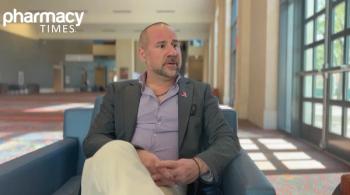
Data Analysis Show More Pharmacy Services Needed in Freestanding Emergency Care Facilities
Study authors saw a 15% increase in patients during the study period, including a 27% increase in children and a 20% increase in patients over age 60 years.
Freestanding emergency rooms (ERs) may benefit from additional pharmacist hours due to increasing patient numbers and acuity, according to researchers at a Florida hospital.
Ramat Omole, of Memorial Hospital Pembroke, Florida and colleagues noted an increase in the popularity of freestanding ERs. Shorter wait times and easier accessibility, due to 24/7 operating schedule, were cited as possible reasons for the increase. They also reported an increase in patients using high alert drugs in these types of locations and evaluated what role a full-time pharmacist could play in managing patient needs.
Investigators used EPIC to collect data from a freestanding ER in the city of Pembroke Pines within the Memorial Healthcare System between 2015-2018. From January 1-June 30 over each of the 4 years, investigators analyzed demographics, census records, prescription orders, and medication errors, and reported daily averages.
For the study,
Study authors saw a 15% increase in patients during the study period, including a 27% increase in children and a 20% increase in patients over age 60 years. Visits to the freestanding ER by patients ages 13 to 34 years increased by 9% and those between the ages of 35 to 59 years increased 16%. On average,13 patients a day were transferred to an affiliate hospital as high acuity or emergency cases; 50% were admitted. Patients with a history of chronic disease increased by 7 patients a day, an increase of 2 per day from 2017-2018.
Omole and colleagues reported EPIC prescription orders increased by 28%, and that the number of Category C to E severity errors was 80% of all errors reported.
Investigators said that with the increasing number of patients using freestanding ERs and the level of acuity, more pharmacist hours at these facilities would greatly benefit patients and reduce errors. They said the pharmacist’s role would include medication management for patients with chronic diseases, reconciling medication for transferred patients, patient counseling, reviewing orders, and educating staff.
“The pharmacist can perform these roles under a defined protocol of responsibilities in collaboration with the medical and nursing team,” they concluded.
Investigators presented their findings during a poster session at the
Reference
Omole R, Barnes S, Francisco J, Vishwas D. Evaluation of pharmacy services at a free-standing emergency room (ER). Presented at: 2019 ASHP Summer Meetings & Exhibition (Session # 16-T; Abstr 175-176). June 8-10, 2019. Boston, MA.
Newsletter
Stay informed on drug updates, treatment guidelines, and pharmacy practice trends—subscribe to Pharmacy Times for weekly clinical insights.






















































































































































































































